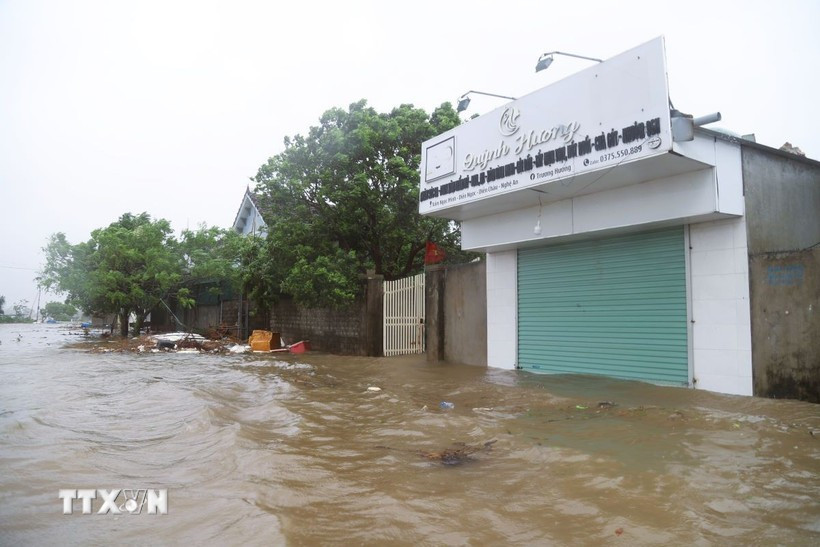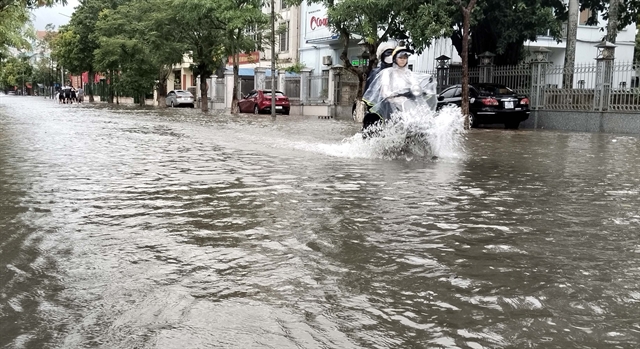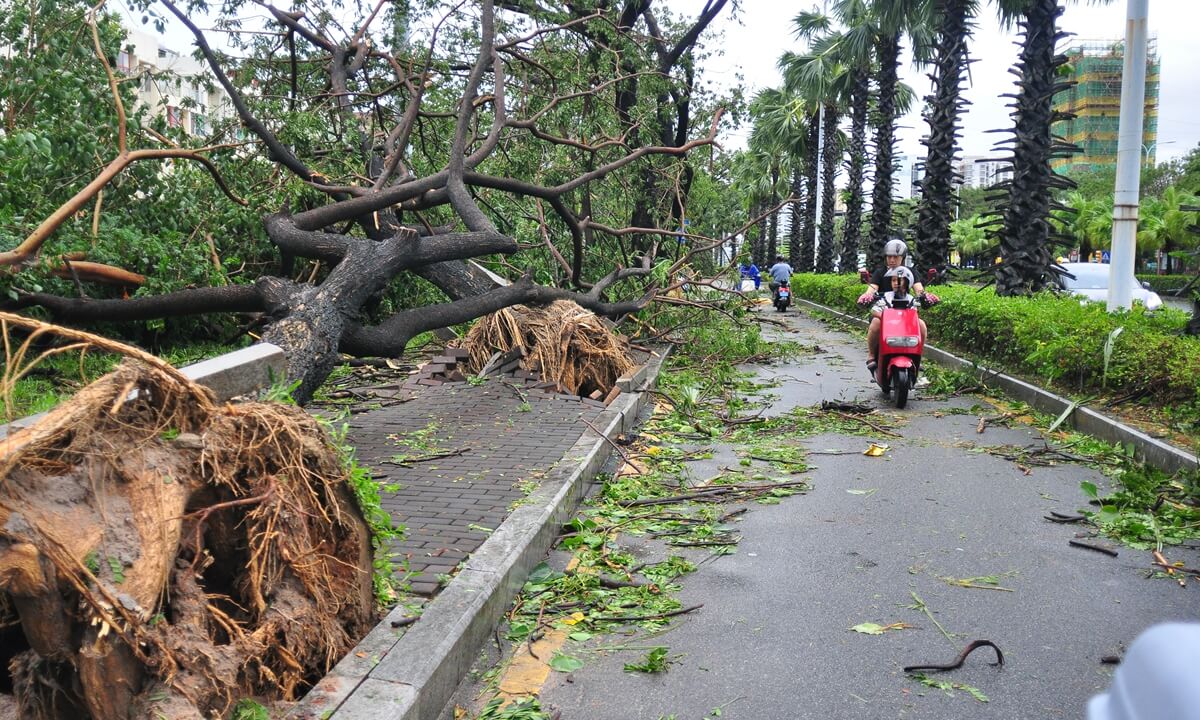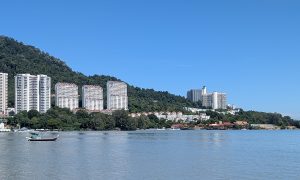Tens of thousands evacuated as storm lashes central provinces with destructive winds and floods
Typhoon Kajiki slammed into Vietnam’s central coast on Monday, killing three people, injuring at least 13 others, and forcing the evacuation of more than 44,000 residents before weakening into a tropical storm.
The storm made landfall in Nghe An and Ha Tinh provinces at about 3 p.m. local time, with maximum sustained winds of 133 kph, according to Vietnam’s national weather forecast agency. Though Kajiki has since weakened, its impact across the country has been severe.

STATE DAMAGE AND EVACUATIONS
Strong gusts tore through homes, toppled lampposts, and uprooted trees. State media reported that over 6,800 houses were damaged, while flooding swamped some 28,000 hectares of rice paddies.
Seven provinces in central and northern Vietnam were affected by the storm’s winds and rain. In Hanoi, about 350 km north of the landfall site, flash floods inundated roads and homes, leaving parts of the capital paralysed.

Local authorities ordered schools to close, suspended flights at two provincial airports and carried out widespread evacuations. Many coastal residents boarded up windows and reinforced buildings with sandbags ahead of the storm’s arrival.
According to the Vietnam News Agency (VNA), more than 44,000 people were moved from low-lying areas in preparation. Eyewitnesses described dramatic scenes along the coast as surging waves up to two metres high pushed seawater into towns and villages.
“It’s terrifying,” said Dang Xuan Phuong, 48, from the tourism town of Cua Lao in Nghe An. “From higher floors, I could see waves as tall as two metres, and the water flooded the roads around us.”

WIDESPREAD IMPACT
In Ha Tinh, large areas lost power and mobile networks faltered as torrential rain pounded the province. Thanh Hoa was also hit by tidal surges that left coastal communities under water.
Though the storm was gradually weakening as it moved inland, the weather forecast agency warned that strong winds and heavy rainfall still posed risks.
On Sunday, before landfall, authorities in central provinces had already activated emergency measures. Plans were drawn up to evacuate more than half a million people across Thanh Hoa, Quang Tri, Hue and Danang provinces. Fishing boats were ordered to remain in port, and efforts were made to secure dams and flood defences.
The military mobilised more than 300,000 personnel, with naval, coast guard and air force units placed on standby for potential rescue missions.
Government officials drew comparisons to Typhoon Yagi, the most destructive storm to hit the region last year. Yagi killed some 300 people in northern Vietnam and devastated factories, farmland and infrastructure. While Kajiki was weaker than Yagi, its destructive winds and extensive flooding underscored the region’s vulnerability.

RAINS TO CONTINUE
Kajiki is expected to continue inland toward Laos and Thailand, with the risk of flash floods and landslides rising sharply. Meteorologists forecast between 200–400 mm of rain in many areas of central Vietnam, with some isolated locations likely to receive more than 600 mm.
The storm also battered southern China before reaching Vietnam. On Sunday evening, it swept past Hainan island and parts of Guangdong province. In Sanya, a resort city on Hainan, authorities closed beaches, suspended transport services and shut tourist attractions. By Monday morning, Sanya downgraded its typhoon alert, but continued to warn residents of heavy rain and localised flooding.

CLIMATE CHANGE WARNINGS
Scientists have stressed that the worsening impacts of tropical cyclones in the region are closely linked to human-driven climate change.
Benjamin Horton, professor of earth science at City University of Hong Kong, told the Associated Press: “It’s frightening to see our projections from just last year already materialising. We are no longer predicting the future – we are living it.”
While developed countries bear the largest historical responsibility for greenhouse gas emissions, it is developing nations in Southeast Asia that continue to suffer the heaviest consequences from stronger, wetter and slower-moving storms.

Reporting from CNN, Vietnam News Agency, and Associated Press contributed to this article.



















